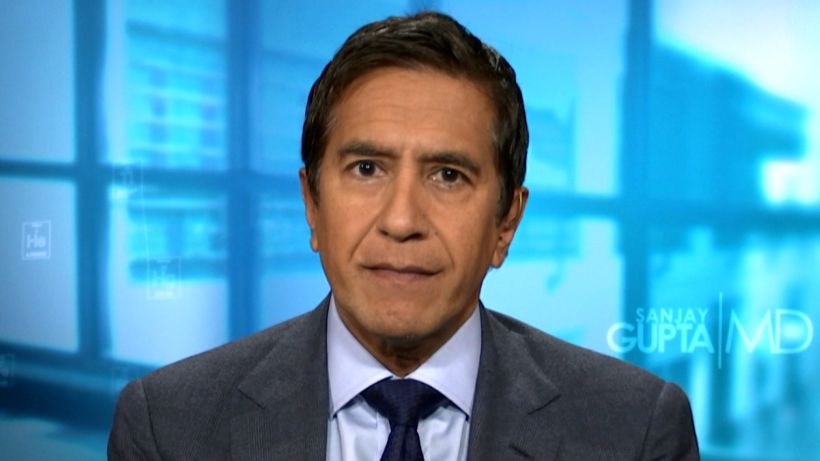Covid-19 deaths have fallen dramatically across the United States – average daily deaths are less than a tenth of what they were at the peak of the pandemic, according to data from Johns Hopkins University – but nearly 300 people are still dying of Covid-19 each day in the US.
Some groups remain more at risk than others.
People who died of Covid-19 in May were younger and more disproportionately Black than those who had died of Covid-19 throughout the pandemic, a CNN analysis of CDC data shows.
And Americans who are still dying of Covid-19 are “overwhelmingly” unvaccinated, Dr. Anthony Fauci told CNN’s Jake Tapper on Tuesday.
“This is exactly what we would expect, given ongoing inequities in vaccine access and a smaller proportion of younger people having been protected by vaccination,” William Hanage, a member of Harvard University’s Center for Communicable Disease Dynamics and associate professor of epidemiology, told CNN.
Deaths are a lagging indicator of disease, following weeks and sometimes months behind initial Covid-19 diagnosis, experts say.
“For May, we might be looking at a group of individuals diagnosed in March or April, or in some cases even February,” during a time when the US was still prioritizing older adults and those with certain comorbidities to be vaccinated, Dr. Judith O’Donnell, hospital epidemiologist and director of infection prevention and control at Penn Presbyterian Medical Center, told CNN.
People 75 and older have accounted for about 57% of all Covid-19 deaths in the US, but the balance was shifted in May, with 59% of deaths among those under the age of 75 for that month, CDC data shows.
Instead, those between the ages of 50 and 64 have represented a significantly larger share of deaths recently. In May, about a quarter of deaths occurred in this age group, compared to 16% of total deaths throughout the pandemic.
And adults under 40 represented about 3% of Covid-19 deaths in May, more than double their share of total deaths since the pandemic began.
O’Donnell, who has cared for inpatients with Covid-19, says there is a “striking difference” in the people she’s treated over the past couple of months compared to a year ago, with the average age of hospitalized patients now two decades younger than it was.
But it’s not just about age, she said. The same comorbidities – including heart failure, kidney failure, obesity and history of smoking – put people of all ages at higher risk, although vaccinations are making a difference.
“We’re very rarely seeing the older population hospitalized and I think it’s because they heard the vaccine message, rolled up their sleeves and, in most cases, got vaccinated early on,” O’Donnell said.
“The 18 to 29 group is really undervaccinated right now, and if it stays that way, we’re going to see them accounting for a greater share of hospitalizations and deaths as time goes on.”
Racial gaps getting wider
Black people have also represented a larger share of Covid-19 deaths recently, as well as lower vaccination coverage, CDC data shows.
Throughout the pandemic, Black people have been disproportionately affected by Covid-19, accounting for about 12.5% of the population but more than 15% of total deaths, according to CDC data.
That disparity was even larger in May, with nearly 19% of Covid-19 deaths throughout the month among Black people. In recent weeks, Black people and American Indians have been more than twice as likely as non-Hispanic White people to die of Covid-19, CDC data shows.
Indeed, Black people are the most undervaccinated racial or ethnic group in the US. More than 45% of the US population is fully vaccinated against Covid-19, but coverage among Black people is less than half of that, at about 22%.
“These lower rates may be due in part, to vaccine hesitancy, but they may also be due to inequities in vaccine access,” Dr. Lisa Cooper, founder of the Johns Hopkins Center for Health Equity, told CNN. “Many African Americans in the South live in rural areas with limited access to health care facilities. Furthermore, many people may have other stressors related to housing, food, or job insecurity, which may be preventing them from getting vaccinated.”
Get CNN Health's weekly newsletter
Sign up here to get The Results Are In with Dr. Sanjay Gupta every Tuesday from the CNN Health team.
The share of Covid-19 deaths among Asian and Hispanic people, however, decreased in May and both groups were underrepresented in their share of Covid-19 deaths relative to their share of the population.
While vaccination coverage among Hispanic people also lags the US average – about 25% overall – rates have been increasing for this group over recent weeks, CDC data shows. And Asian people recently surpassed non-Hispanic White people in terms of vaccination coverage and have had one of the lowest death rates throughout the pandemic.
“Health equity plays into this because as we have learned over the past year, we are not safe until we are all safe,” Cooper said. “As long as some people in our society don’t have what they need to stay healthy, we are all at risk of the infection spreading, overwhelming our health systems and leading to lockdowns that harm all of us through their negative effects of our psychological and social well-being, our physical health and our economic stability.”
Experts stress that continued vaccination efforts are critical to stop the spread of the virus and prevent more deaths.
“As more Americans have rolled up their sleeves to get vaccinated, we have chipped away at the ability of the Covid-19 virus to cause more illness and more suffering,” Walensky said. “This new virus forced too many of our families to accept death as its outcome for too many of our loved ones, but now, this should not be the case.”
Lauren Mascarenhas contributed to this report.


















